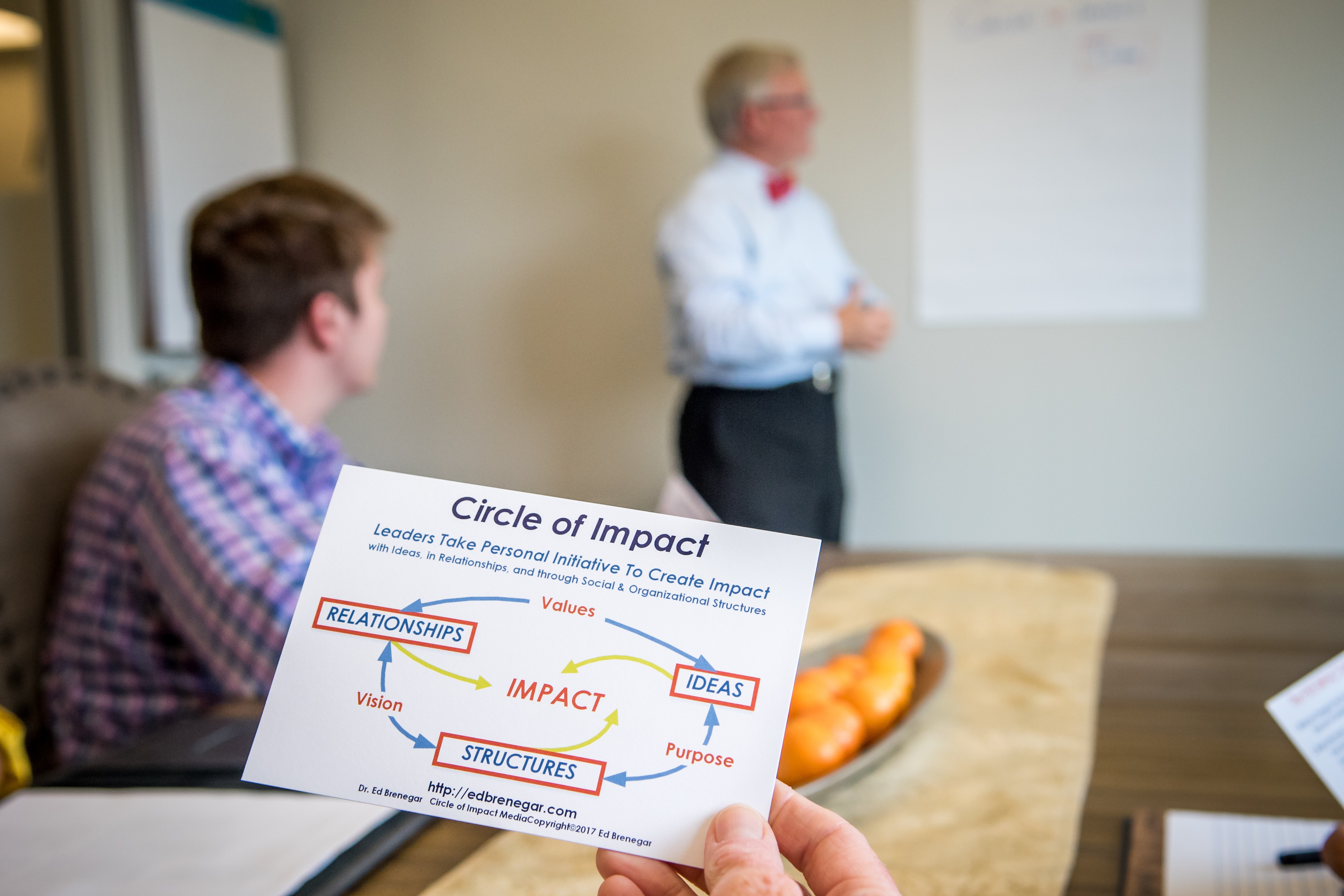The Circle of Impact model is based upon a practical alignment of the three dimensions of leadership. The alignment is important because without it each dimension is looked at in isolation.
What does alignment mean?
It means that ideas that are not relevant to how we relate to people, or how an organization functions are merely abstract curiosities.
It means that an organization that has no clear understanding of its purpose for impact, or the values that undergird the culture of relations, operates like a machine without an operator.
It means that relationships that lack a culture of values to unify them around a common purpose will ultimately destroy their organizations through ego and aggression.
However, to say that the three dimensions must be aligned does not actually show them how the dimensions can be aligned. This is why any book that describes a model of organization or leadership, needs also a program to train people on how to put it into practice.
Practice as revealed in the book
There are four sections to the Circle of Impact. Each one has an independent value that is enhanced by seeing the whole scope of the book as a unified perspective on leadership.
Section One: All Leadership Begins with Personal Initiative
This section presents the perspective that the Circle of Impact model of leadership in transition away from the conventional belief that leadership is an executive role and title within an organization. It demonstrates how we as individual human beings function in all aspects of our life and work. It also points to the reality that if the Circle of Impact is an acceptable way to understand leadership, then it means that organizations should be organized so that all members of the organization can take ‘personal initiative to create impact that makes a difference that matters’.
Section Two: We are all in transition
In this section, I illustrate the difference between change as a random, disruptive experience and transition as the way our lives unfold over time. This understanding of transition is described from the perspective on individual experience, as well as the transitions that are happening in the practice of leadership and the functioning of organizations.
Section Three: Inside the Circle of Impact
The third section describes the three dimensions of the Circle of Impact and how they are aligned in practice. Here I show how to use the Circle of Impact model for analysis, problem-solving and planning. It is the core section related to the training program that I have created.
Section Four: Leadership Impact for a World in Transition
This last section shows how the Circle of Impact can be applied in our world today. I point to principles that are key to effectively becoming persons of impact
How Circle of Impact Training Works
The training takes the abstract concepts of the Circle of Impact and turns them into practical tools for creating impact.
We begin by looking at the context of the person’s life or the challenges that an organization is facing. It is important to be clear about what this means. Then the model can be applied.
For example, if you told me that there is little respect between the members of your team? Or, that you had not even thought about the importance of respect until some incident occurred, then we would have a starting point for applying the Circle of Impact.
The problem is either one of relationships, ideas or structure. Respect is a value that is expressed and felt between people in a relationship. It is also a product of how an organization is structured. We need to decide where the critical need is. How do we choose?
We ask questions about what has transpired. How far back in time do we need to go to when respect was expressed between team members? I want you to ask, “What has changed? How are we in transition?” It is important to see change unfolding over time. In doing so, we can see which of the dimensions is the source of the problem.
Once we can see the situation with some clarity, then we can apply the Circle of Impact.
The Goal of Circle of Impact Training
The goal is simple.
Equip people with the capacity to see the impact that they want to create. And to see how the three dimensions interact to achieve it.
To move from a fragmented perspective to one that can see the interaction of the parts of the organization requires us to have a focal point. Impact is such a point of integration. When we ask what the impact of our ideas should be, we are not just looking at them from the perspective of clarity and inspiration, as important as that is. We need to see how our values can build a culture of trust between employees and the company for a shared purpose for impact. For this to happen, our ideas need to help clarify what kind of structure is needed to focus each employees’ efforts towards achieving the common goal of impact. In this sense, the structure of the business is a product of the ideas dimension. The purpose of the structure is to fulfill the company’s purpose by providing each person with a structure that enables them to fulfill their individual potential for impact. This just one way to understanding how the alignment of the three dimensions is essential for the health of an organization. *
When this goal is achieved, then the Circle of Impact becomes a practical tool for problem-solving, planning, communicating and finding new innovative approaches to work. As a result, people find confidence, satisfaction, and appreciation for the contributions that they are making to the organization’s creation of impact.
* pp.101-102, Circle of Impact: Taking Personal Initiative To Ignite Change.


